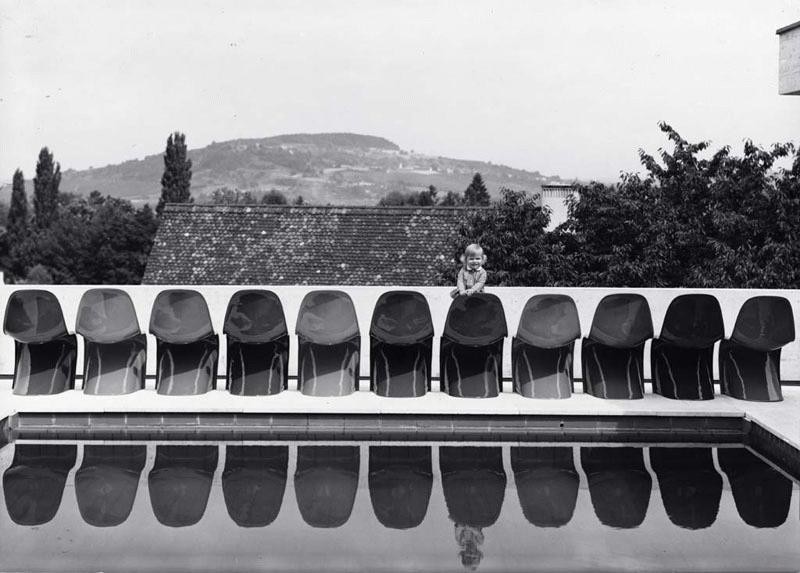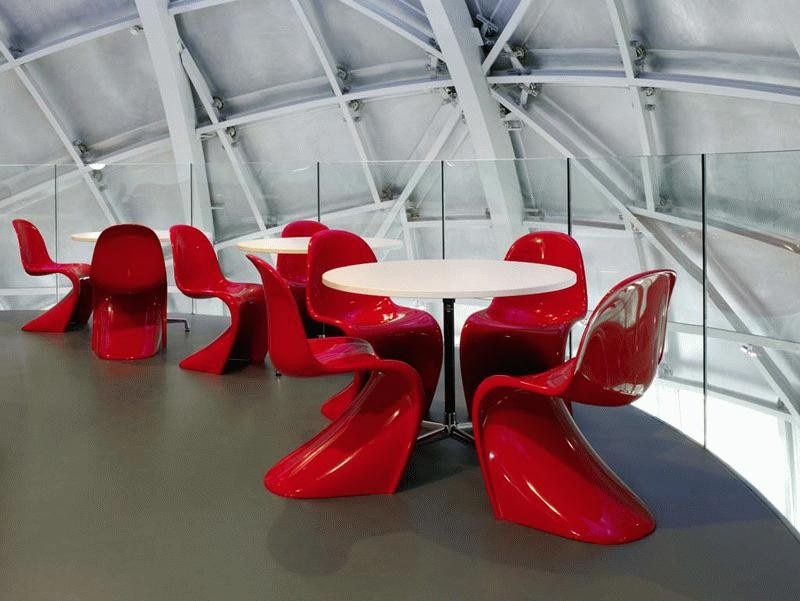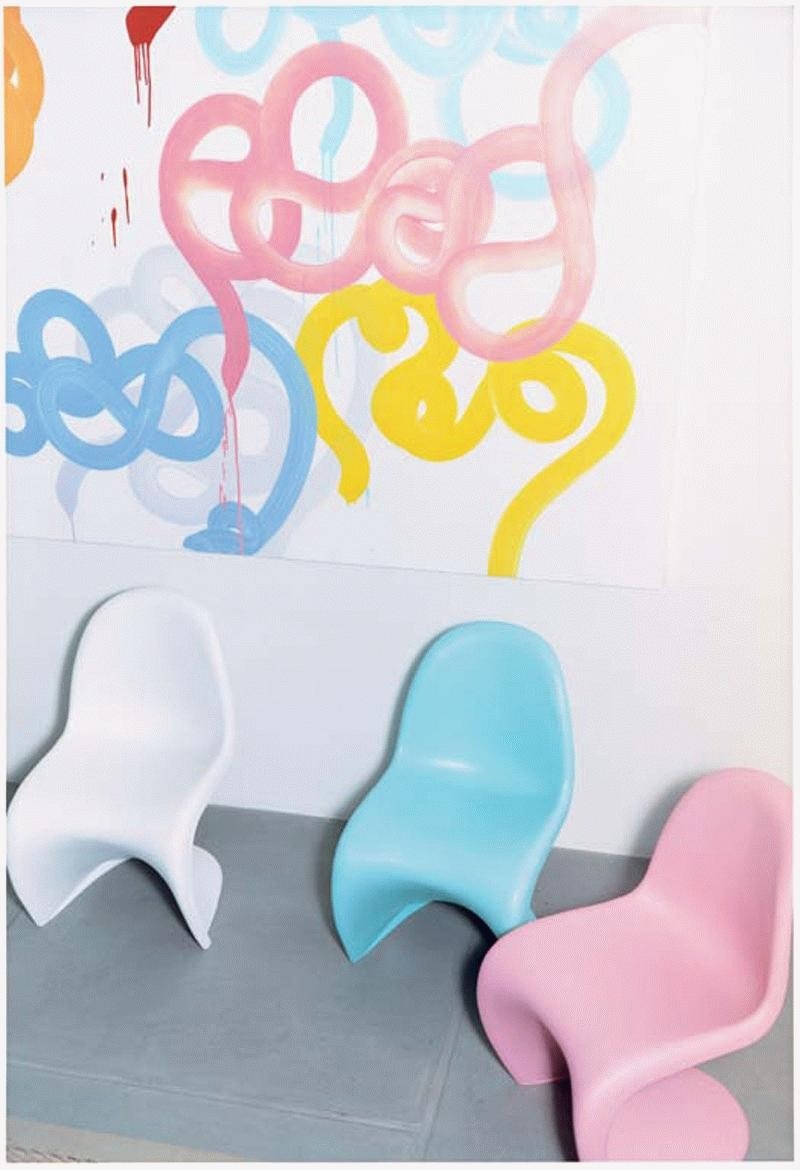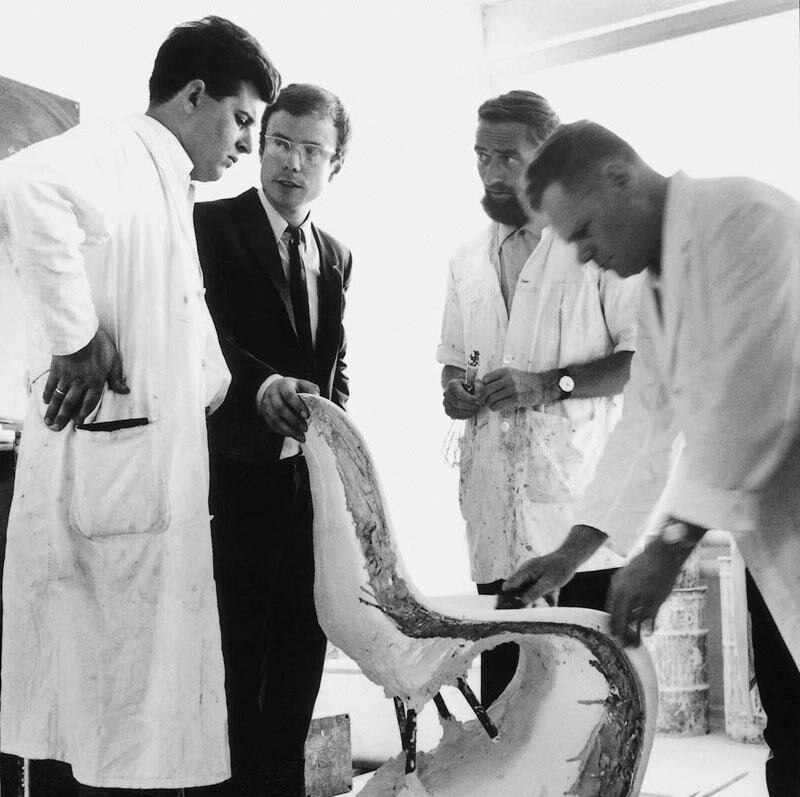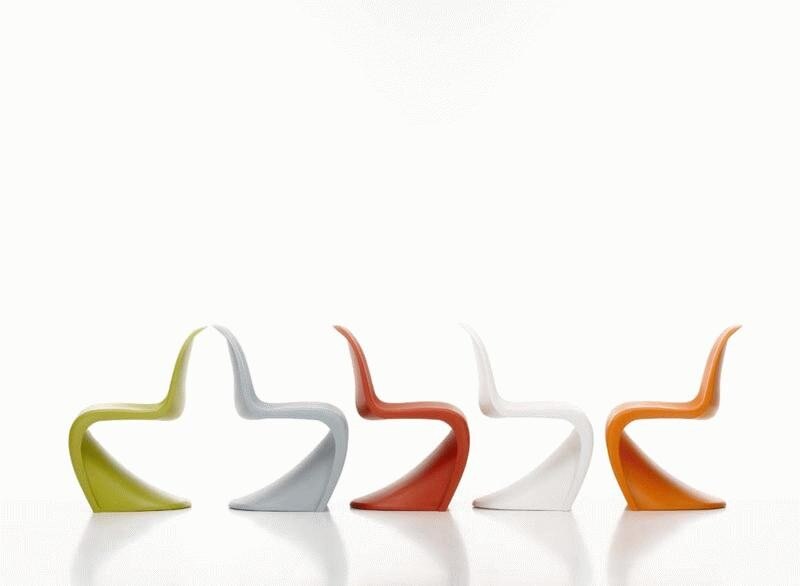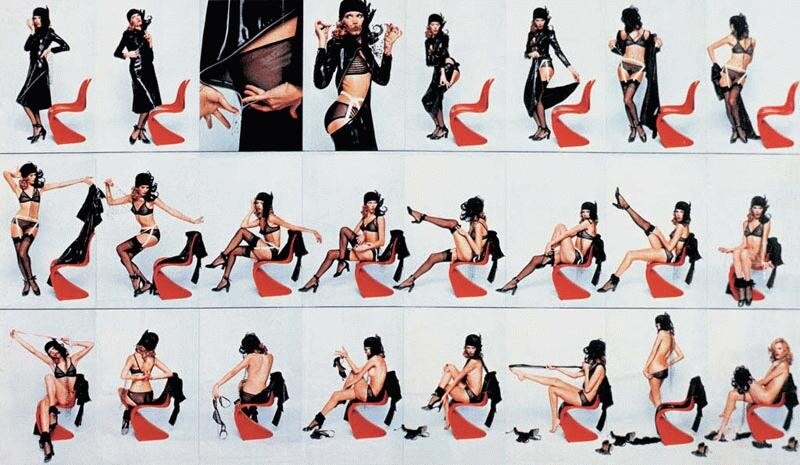“Verner Panton came to Basel for one reason: he had found the possibility to make the chair that he had been thinking about for years which later became the Panton Chair. He had talked to a number of manufacturers in Germany and Denmark. He had a little vacuum-form model that was not the real form or size, but represented the idea. He had also talked to my father Willi, who was interested. At the time, I was a student, but I also worked with my father on design projects. So I was involved in the discussions, and we became friends. Over the next years, the project was developed. Off and on I was involved in the process…
The Eames had a more construction-oriented approach. Their idea of design was not to find a convincig form but to solve a problem. The leg of a chair was a leg, the armrest was an armrest, the seat was a seat, the back was a back, them they brought it all together. Panton’s search was more for a “total image” of a chair or interior. To speak with Louis Kahn, it’s a difference between “elephant design”, where there is an over-all form, and “mosquito design” where the form consists of separate parts, like in Eames’ design. Panton did “elephant design”, made from one material, without interruption…
Panton’s idea was that of unification, and he looked at wood to do that. But of course the ultimate unification of functions was only possible with plastics, and that fascinated Panton. For our collaboration with him, we first had to think if it was possible to make it in plastic. Now, it is easy to say yes, but at the time nobody thought it was possible. I remember that our manager of product development, my father and myself discussed at lenhth if it could be done. Then the head of product development, Manfred Diebold, said “Yes, I believe it can be done.” So I began pushing because I was so happy for Panton…”
From top: Verner Panton, ©Panton Design/Heiner Schmitt; ©Panton Design, 1967, photo by Louis Schmitt; the Panton Chair in the lobby of the Atomium, photo by Jan Bitter, ©asbl Atomium vzw, 2006; Panton Junior, photo by Marc Eggiman, 2009, ©Vitra; Verner Panton and Rolf Fehlbaum during the prototyping of the Panton Chair, ©Vitra, 1966; Panton Chair, ©Vitra; “How to undress in front of your husband”, photography series with Amanda Lear, 1970, photo by Brian Duffy, ©Vitra.
